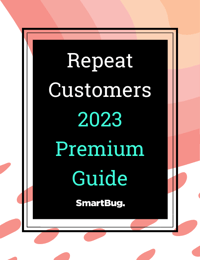
E-commerce personalization refers to the practice of tailoring individual customers’ shopping experiences to their personal preferences and behaviors. Personalization can be achieved through various means, such as:
- Recommending products that are similar to those a customer has viewed or purchased in the past
- Providing customized product recommendations based on a customer's browsing history or search queries
- Displaying personalized content such as special offers and discounts
Overall, the goal of e-commerce personalization is to provide a more personalized and relevant shopping experience to customers, which can lead to increased customer satisfaction and loyalty.
Why is personalization important for an e-commerce business?
Personalization is important for an e-commerce business for two primary reasons:
- It helps to improve the customer experience.
- It helps to increase sales.
When customers feel like a business is providing them with a personalized and relevant experience, they are more likely to engage with the business and make a purchase. Here are a few specific ways in which personalization can benefit an e-commerce business:
- Increased engagement: Personalization can help to increase customer engagement by providing customers with content and offers that are tailored to their interests and behaviors. This can make the customer more likely to spend more time on the website, browse products, and ultimately make a purchase.
- Improved customer loyalty: Personalization can help to build customer loyalty by making customers feel valued and appreciated. When customers feel like a business is going out of its way to provide them with a personalized experience, they are more likely to continue shopping with that business and recommend it to others.
- Increased sales: Personalization can help to increase sales by providing customers with relevant product recommendations and special offers. This can make the customer more likely to make a purchase, and may also increase the average order value.
- Enhanced customer satisfaction: Personalization can help to enhance customer satisfaction by providing a more relevant and enjoyable shopping experience. When customers feel like a business understands their needs and preferences, they are more likely to be satisfied with their purchase.
What are some examples of personalization in e-commerce?
Creating a personalized customer experience requires marketing automation that allows you to collect and analyze data. With this information, you can create a differentiated journey for each customer across multiple touchpoints.
Dynamic Content to Segment Traffic
Companies with a large customer base and product catalog create segments to target different demographics. After all, if you cater to both middle-aged men and children, you’re obviously not going to create the same shopping experience for them.
This type of segmentation is called audience segmentation, and it’s the most important part of your personalization strategy. Here are some suggested ways to segment your traffic:
- Geolocation/IP address tracking allows you to identify the country, region, state, and locality of users. This might reveal information about the language and currency they use. You can also market specific products based on factors such as their region’s weather conditions, for example.
- Device recognition identifies customers based on their operating system, device, and channel. This information can reveal insights into average order value, traffic source, and operating system (for dynamic pricing).
- Demographics consider age, gender, and job title to tailor messaging toward specific products and experiences.
- Behaviors based on the customer journey can help you deliver tailored content to new customers, returning customers, newsletter subscribers, and cart abandoners.
Dynamic Content Blocks
A dynamic content block is a customizable widget on a landing page or email that displays related or last-viewed products, last-viewed categories, or content based on the visitor segment.
Dynamic content blocks are also great places to announce promotions, sales events, discount codes for loyal customers, and CTAs to complete questionnaires and surveys.
Overlays
Overlays are graphical content boxes that appear in the middle of a website page. Overlays are often great tools to increase conversions by asking the visitor to provide their email address or phone number in exchange for a coupon, discount, or free trial.
Reaching the right people at the right time is crucial when using overlays. Here are a couple of ideal audiences for overlays:
- First-time visitors: Offer an exclusive first-time buyer discount or prompt a sign-up for your newsletter.
- Visitors who are predicted to bounce: With the right tool, use ex-intent triggers to pop up an overlay presenting an offer to encourage a conversion.
Headers, Footers, and Sliders
Pop-ups aren’t a sure thing—most people click out of them without looking at them. If they aren’t responding, make sure to embed header and footer banners throughout your website. Headers and footers can:
- Direct the visitor to a content or product page
- Serve as a countdown timer for a sales event
- Provide social proof from existing customers, such as star ratings or testimonials
Segmentation of VIP Customers
Repeat and VIP customers have the highest lifetime value, frequency of purchase, and average order value. They’re also the most likely segment to purchase products at full price. All this is to say that you want to protect them at all costs. You can do so by rewarding them with:
- Exclusive online events and previews
- Loyalty programs
- Subscription plans
- Appreciation gifts
Expand your rewards based on your product offerings and customer segments!
Product Recommendations on Checkout Pages
By recommending products at the checkout page, you can drive up average order value. These products should be set up dynamically to pair nicely with items in the cart. This up-selling, cross-selling technique will encourage them to add more items.
Ready to personalize your customer journey with SmartBug Media?
Creating personalized content isn’t limited to the strategies we’ve listed above. In fact, we wrote about 20 personalization strategies that really dig deep into how nuanced personalization can get.
Personalizing is a major way you keep your customers happy, and we’ve created data-driven strategies that have helped a number of clients in the e-commerce space do exactly that.
Want to see how exactly we can help you drive revenue? Talk to one of our e-comm team members today!

About the author
Ryan O’Connor was formerly SmartBug’s Director of E-commerce Growth, product manager, and sales director. He enjoys helping readers learn how to solve big business challenges through consumer psychology within the constantly evolving e-commerce landscape. Over the past 10 years, Ryan has helped 1000s of DTC brands navigate challenges to grow fast through intelligent marketing. He’s not afraid to get his hands dirty, having launched his own e-commerce stores from the ground up. Read more articles by Ryan O’Connor.









-4.png?width=800&length=800&name=Untitled%20design%20(1)-4.png)